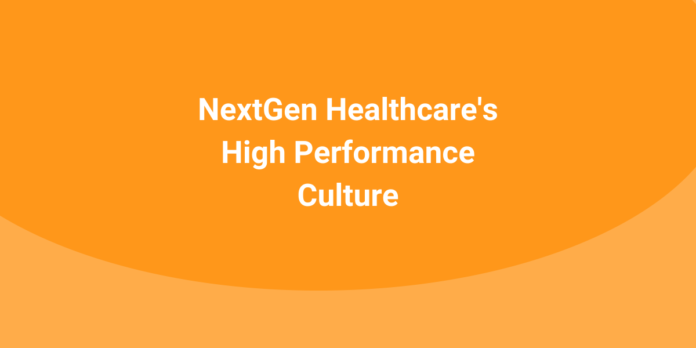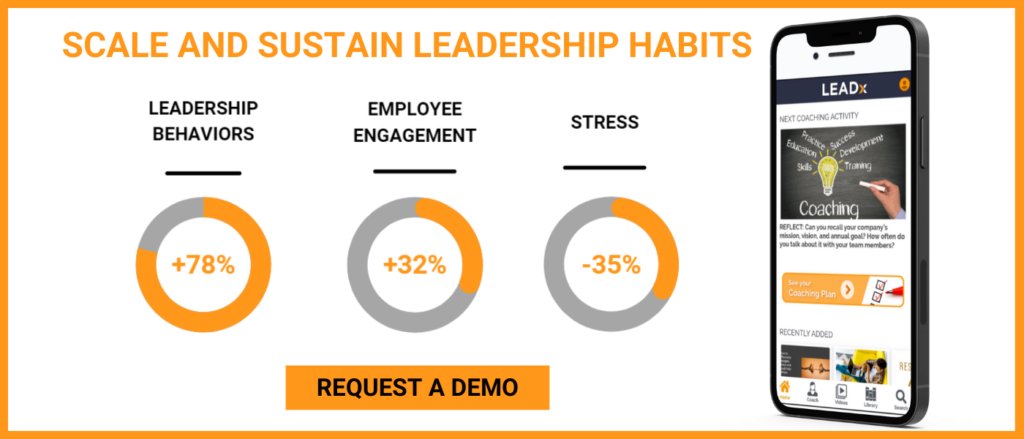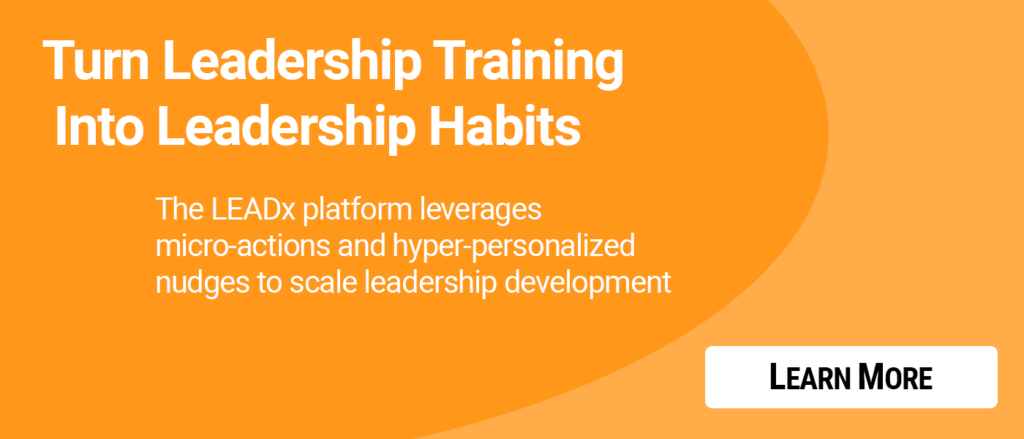
In most organizations, leadership development and employee engagement live in separate silos. Even though managers' behaviors are the primary driver of engagement, the team that measures engagement is usually separate from the team that can actually do something about it.
This is not the case at NextGen Healthcare, a 2,600-person healthcare solutions provider offering a comprehensive integrated technology and services platform to ambulatory and specialty practices of all sizes. Jeff Carroll, VP of Organizational Development, oversees NextGen Healthcare's leadership and employee development functions.
Senior leadership’s dedication to talent development led to the creation of Carroll’s team and an organizational shift in focus from just what people accomplished to also how they accomplish it. This mindset shift kicked off a more strategic approach to leadership development that leans heavily on data and feedback gleaned from employee engagement surveys.
“We've been intentional about building out programming based on what our employees are saying,” said Carroll. “And people wanted more development for their managers.”
Foundational Leadership Training
The first of NextGen Healthcare's leadership development programs is called Manager Effectiveness: Believe in Better Leadership, for employees who have recently been promoted to people leadership roles for the first time. This program focuses on basic leadership skills including delegation, situational leadership, and team-building.
LEAD, which stands for Leading Effectively through Accountability and Development, is NextGen Healthcare's second program. Both Manager Effectiveness and LEAD were originally intended to span multiple days of classroom learning. But in gathering feedback from employees, Carroll's team learned that people found the required classroom sessions too time-intensive. So to cut down on classroom time while ensuring NextGen Healthcare's leaders had the opportunity to absorb all the content integral to the program, the team revised LEAD to be a single, full-day workshop bookended by self-paced pre- and post-learning.
“Asking our leaders to go through 12-16 hours of content on their own time ahead of the workshop levels the playing field and ensures that the time we do spend in the classroom together is interactive, hands-on and fun,” said Carroll.
During that one-day workshop, LEAD participants learn skills like interviewing, budgeting, coaching and giving feedback with engaging activities. For example, leaders learn how to get the most out of an interview and what to look for in a candidate during an interview “speed dating” activity, and the principles of budgeting with a Jenga-like game. Along with driving home concepts introduced during the pre-learning phase, Carroll's team also provides quick introductions for concepts like the GROW coaching model during the workshop and offers resources for leaders to consume after-the-fact to deepen their understanding.
Engagement and Creative Slack Contests
Unlike many organizations of NextGen Healthcare's size, Carroll's organizational development department of 12 people is just as focused on improving employee engagement across the company as it is on developing leaders. Philosophically, Carroll believes leadership development and employee engagement should be deeply intertwined.
“You can separate engagement from development, but your leadership development program won't reach its full potential if it's not closely tied to your engagement strategy and you're not paying attention to that data,” said Carroll.
Employee engagement means different things to different companies, but for Carroll, improving it involves creating initiatives that both drive culture and reinforce what the organization is trying to achieve strategically. Contests are one such initiative, which are part of NextGen's “Rewards and Rec” program. These contests, in which NextGen Healthcare employees have an opportunity to answer a simple question or provide a tip to be entered into a drawing for a prize, map back to organization-wide learning.
One example is a recent contest Carroll's team ran on the topic of burnout.
“With the shift to remote, everyone is talking about burnout,” said Carroll. “We had provided a lot of resources and education around burnout, so we decided to add a ‘rewards and rec’ component to create some cohesion.”
To earn two entries for the drawing, all employees had to do was share a tip they personally use to combat burnout and a tip they use to help combat burnout on their team. At the time of this writing, Carroll was preparing for another contest in which people could talk about their dream staycation, be it a closet remodel or simply ordering takeout and playing games with the family. The randomly selected winner will then get a customized prize package based on what they shared.
From Annual to Quarterly Performance Check-Ins
Another key shift at NextGen Healthcare was moving from annual performance reviews to quarterly check-ins between manager and employee. Each quarter has a unique theme to drive productive conversations. One quarter has the theme of goal-setting for the year, the employee rather than the manager drives the next two quarterly discussions, and the fourth quarter meeting serves as the formal performance review. Carroll’s team has made an abundance of resources available to ensure those check-ins are productive and engaging.
Best In Class Levels of Engagement
Along with gathering employee feedback to inform NextGen Healthcare’s leadership development programming, Carroll also uses engagement surveys to measure the effectiveness of his organization’s efforts. In the last five years, NextGen Healthcare has experienced an 18 percent increase in the “manager relationship” engagement driver, and a whopping 34 percent jump in the “culture” driver.
“We’ve also seen a change in what people are asking for in the open-ended portion of the survey,” said Carroll. “In the past year, people have started making comments about wanting to get better at their jobs and be offered more cross-training. So [2020] was a really big year to look at that data and see that everything we’ve been doing is really starting to pay off.”
Big Ideas for Your Organization
Several key philosophies drive NextGen Healthcare’s approach to engagement and leadership development. Consider exploring the following big ideas for your organization:
- Just start. If you don’t already have a leadership development function in your organization, Carroll’s advice is to start somewhere. “You don't have to have a structured program to develop leaders,” said Carroll. “Start by creating one program for one day. You’ll build momentum from there.”
- Bring employee engagement and leadership development under one roof.
- Consider how to drive learning home with a little fun. Regardless of what messaging platform your organization uses, think about new ways for employees to engage with the topics and concepts through fun activities and contests.
- Be passionate about talent development. From senior leadership down through every member of Carroll’s team, developing talent is something the organization is dedicated to.







